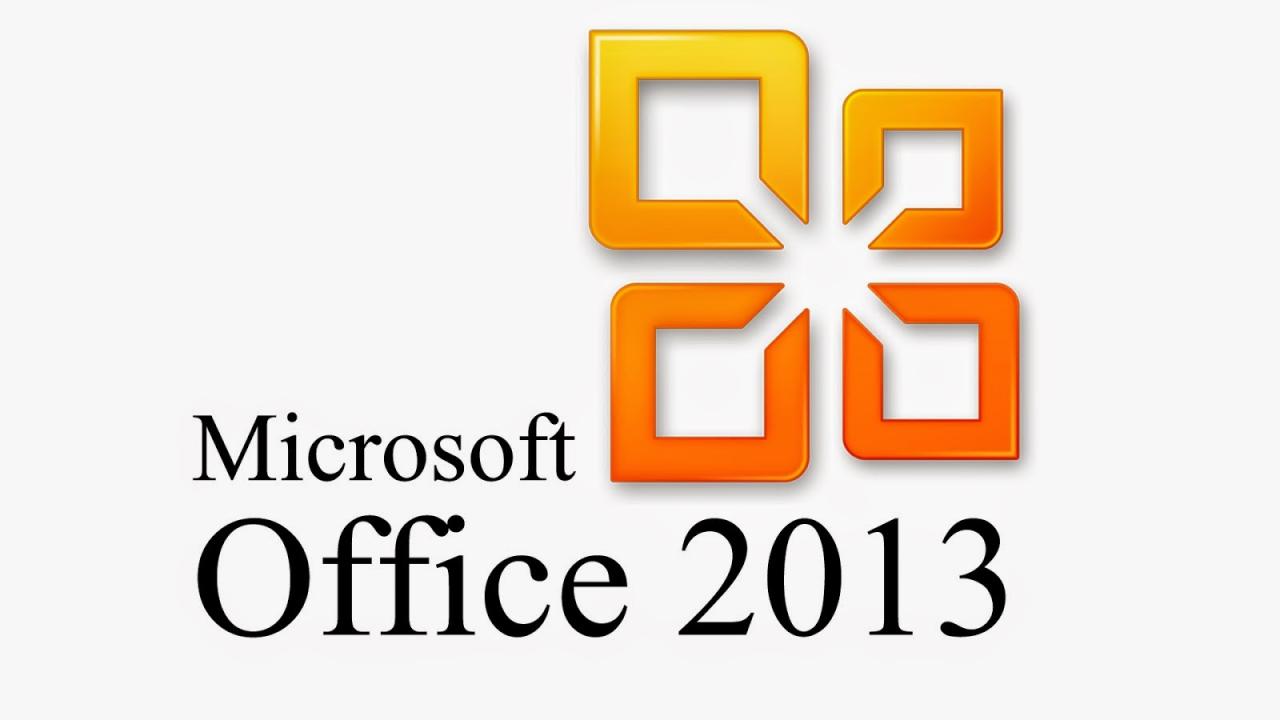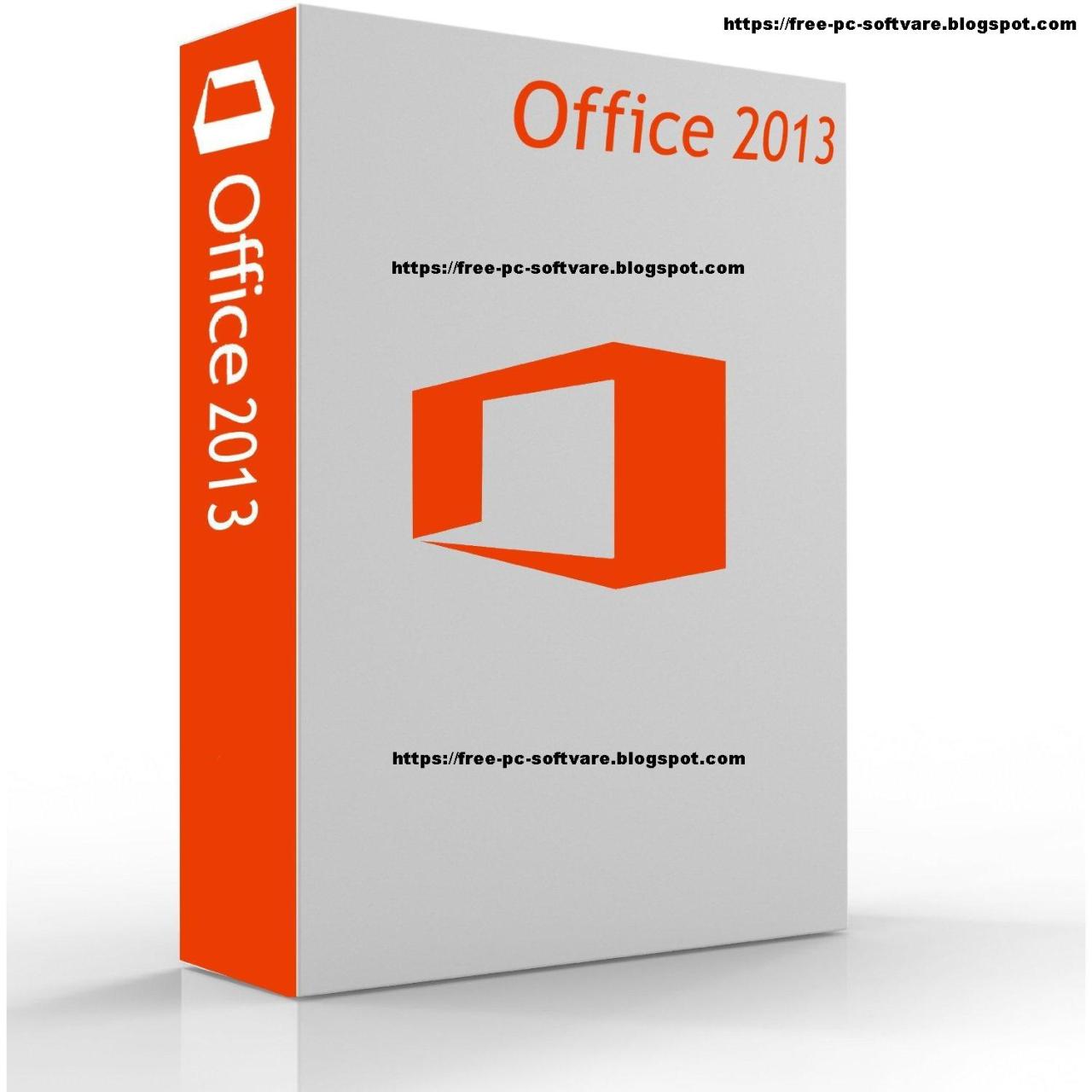Microsoft Office 2013, a powerful suite of productivity tools, revolutionized the way individuals and businesses worked. This release brought a host of new features, a redesigned interface, and enhanced collaboration capabilities, solidifying its position as the industry standard for office software.
Table of Contents
From the familiar Word, Excel, and PowerPoint applications to the robust Outlook email client, Office 2013 catered to a wide range of users, empowering them to create documents, analyze data, design presentations, and manage communications efficiently. The suite’s intuitive design, improved performance, and integration with cloud storage services like OneDrive made it a versatile and user-friendly solution for individuals and organizations alike.
Collaboration and Sharing: Microsoft Office 2013

Office 2013 offers a range of features that enable seamless collaboration and sharing of documents and projects. These features allow users to work together efficiently, regardless of their location.
Co-authoring and Real-time Editing
Co-authoring and real-time editing allow multiple users to work on the same document simultaneously. This feature eliminates the need for email attachments and version control, streamlining the collaboration process.
- Simultaneous Editing: Users can see each other’s changes in real-time, making it easier to track progress and avoid conflicts. This feature is particularly useful for brainstorming sessions, where ideas can be generated and discussed collaboratively.
- Change Tracking: Users can track changes made by others, providing a clear history of edits. This helps maintain transparency and accountability within a collaborative project.
- Comment Features: Users can leave comments directly on the document, allowing for focused discussions and feedback. This streamlines communication and ensures everyone is on the same page.
Integration with Cloud Storage Services
Office 2013 seamlessly integrates with cloud storage services such as OneDrive and SharePoint, providing users with convenient access to their documents from anywhere. This integration enables effortless sharing and collaboration, regardless of location.
- OneDrive: OneDrive is a personal cloud storage service that allows users to store their documents and access them from any device. It also enables users to share files with others, granting them different levels of access.
- SharePoint: SharePoint is a platform for team collaboration that allows users to share documents, manage projects, and communicate with colleagues. Office 2013 integrates with SharePoint, allowing users to access and collaborate on documents stored within a shared workspace.
Sharing Documents and Collaborating on Projects
Sharing documents and collaborating on projects using Office 2013 is a straightforward process. Users can easily share documents with others and grant them different levels of access.
- Save the document to a cloud storage service: This can be either OneDrive or SharePoint, depending on the user’s preference and project requirements.
- Share the document link with collaborators: Users can generate a unique link to the document and share it with collaborators, granting them different levels of access, such as view-only, edit, or full control.
- Collaborate on the document: Once the document is shared, collaborators can access it and work on it simultaneously, using the co-authoring and real-time editing features.
- Track changes and provide feedback: Users can track changes made by collaborators and provide feedback using the comment features, ensuring everyone is on the same page and the project is progressing efficiently.
Productivity Enhancements
Office 2013 is packed with features designed to help users work smarter, not harder. These features streamline tasks, automate processes, and improve overall efficiency, allowing users to focus on what matters most: achieving their goals.
The “Tell Me” Function
The “Tell Me” function is a powerful search tool that helps users quickly find the features and commands they need. It’s located in the top-right corner of the Office 2013 window. Users can simply type in what they want to do, and “Tell Me” will suggest relevant commands, features, or help topics. This eliminates the need to navigate through complex menus or remember obscure command names.
SmartArt Graphics, Microsoft office 2013
SmartArt graphics are visually appealing and versatile tools that help users communicate complex information effectively. They provide a variety of pre-designed templates that users can customize to create professional-looking diagrams, charts, and timelines. Users can easily add text, images, and other elements to their SmartArt graphics, making them highly adaptable for various purposes.
Built-in Templates
Office 2013 includes a wide range of pre-designed templates for various documents, presentations, and spreadsheets. These templates provide a solid foundation for users to start working quickly, saving them time and effort. They offer professional layouts, formatting, and content suggestions, ensuring consistency and quality in their work.
Using Productivity Features
Here’s how users can leverage these features to improve their productivity:
- Using “Tell Me” to find a command: If a user wants to add a table to a Word document, they can type “add table” in the “Tell Me” box. “Tell Me” will then suggest the “Insert Table” command, which the user can select to add a table to their document.
- Creating a visual presentation with SmartArt: To create a timeline of project milestones, users can choose a timeline template from the SmartArt gallery. They can then customize the template by adding text, images, and adjusting the design elements to their preferences.
- Utilizing a template to create a budget spreadsheet: Users can select a budget template from the Excel template library. The template will provide a pre-formatted spreadsheet with categories, formulas, and charts to help users track their expenses and income effectively.
Legacy and Impact
Microsoft Office 2013 left a lasting mark on the productivity and collaboration landscape, setting the stage for future advancements in office software. Its impact can be seen in its role in shaping the evolution of office software and its lasting influence on the industry.
The Evolution of Office Software
Office 2013 introduced several key features that paved the way for modern office software. Cloud integration, which was still relatively new at the time, became a central part of the Office experience with the introduction of OneDrive and the ability to save documents online. This shift towards cloud-based collaboration and storage was a major step forward, allowing users to work together on documents in real-time and access their files from any device.
The suite also saw the introduction of touch-friendly interfaces, recognizing the growing use of tablets and touchscreens. This move made Office more accessible and user-friendly on a wider range of devices.
Furthermore, Office 2013 emphasized user experience and productivity enhancements. Features like the “Tell Me” function in Word, which helped users find commands quickly, and the improved Ribbon interface in Excel made the suite more intuitive and efficient. These features were designed to streamline workflows and enhance productivity for both individual users and teams.
Continued Relevance in the Digital Environment
Office 2013 continues to be used in various settings, despite the release of newer versions. Its features remain relevant in the current digital environment, particularly for organizations that haven’t yet fully transitioned to cloud-based solutions or require compatibility with older systems.
Many businesses and individuals still rely on Office 2013 for its robust feature set, offline capabilities, and compatibility with legacy file formats. The suite’s focus on document creation, editing, and collaboration continues to make it a valuable tool for various tasks, from writing reports to managing spreadsheets.
Additionally, the widespread adoption of Office 2013 has ensured a large user base and a strong ecosystem of third-party applications and services. This ecosystem provides users with additional tools and functionalities that extend the capabilities of the suite.
Examples of Usage
Here are some examples of how Office 2013 continues to be used in various settings:
* Education: Many schools and universities still rely on Office 2013 for student assignments, course materials, and administrative tasks. Its compatibility with older operating systems and its robust features make it a suitable choice for educational institutions.
* Small Businesses: Many small businesses continue to use Office 2013 for their daily operations, including creating invoices, managing customer data, and collaborating on projects. The suite’s offline capabilities and compatibility with older systems make it a reliable choice for businesses that may not have access to cloud services or prefer a more traditional approach to work.
* Government Agencies: Some government agencies continue to use Office 2013 for official documents, data analysis, and communication. The suite’s security features and compliance with government regulations make it a suitable choice for sensitive information.
* Personal Use: Many individuals still use Office 2013 for personal tasks such as writing letters, creating presentations, and managing budgets. The suite’s familiar interface and robust features make it a user-friendly choice for personal use.
Last Recap

Microsoft Office 2013’s legacy continues to resonate today, with its core features and functionalities laying the groundwork for subsequent releases. The suite’s impact on the productivity landscape is undeniable, as it fostered a culture of collaboration, streamlined workflows, and empowered users to achieve more. As technology evolves, the lessons learned from Office 2013 remain relevant, reminding us of the importance of user-centric design, seamless integration, and the power of productivity tools to enhance our daily lives.
Microsoft Office 2013 is a powerful suite of productivity tools, but sometimes you need something more visual. If you’re looking for a free 3D modeling program, you might want to check out google sketchup free. While it’s not part of Office 2013, it’s a great tool for creating 3D models for presentations, designs, and more.
